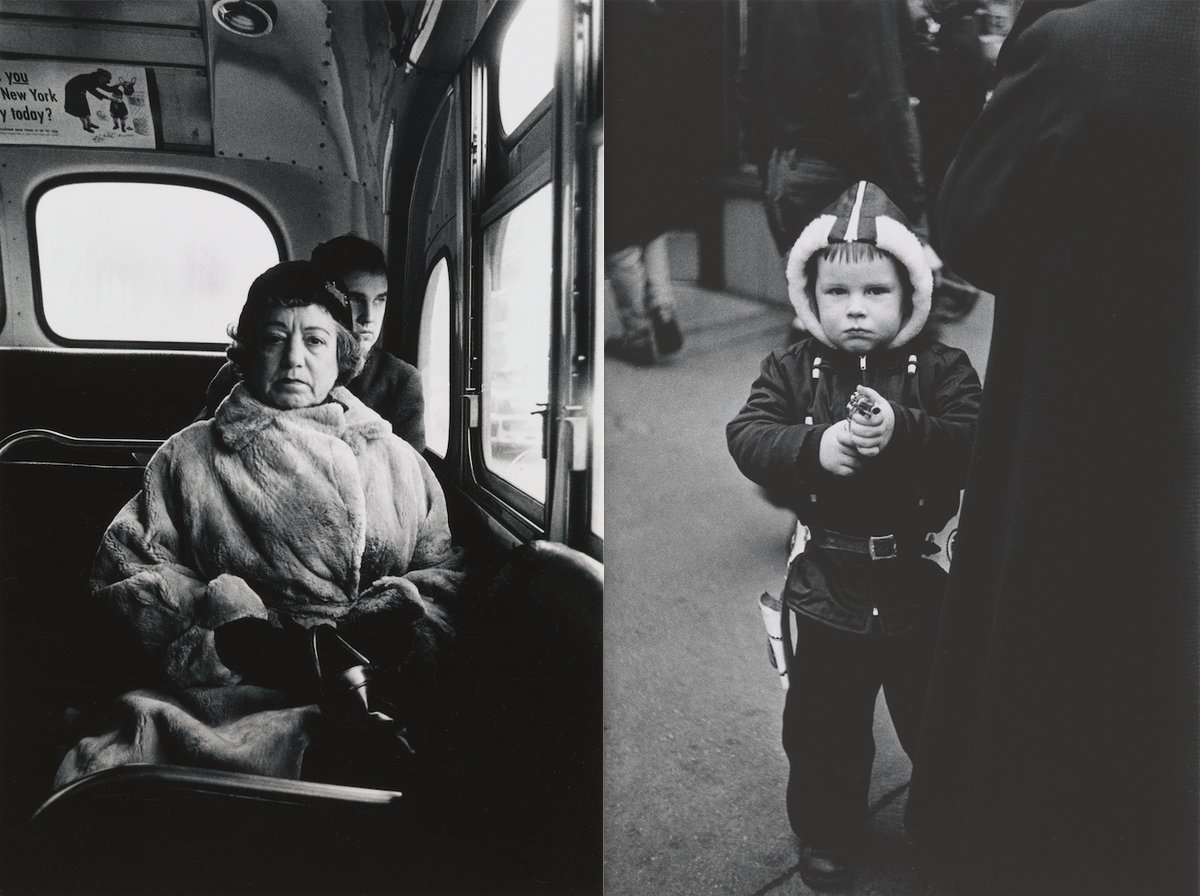“A photograph is a secret about a secret. The more it tells you the less you know,” reads a quote from Diane Arbus pasted up high on one of the 3.3m-high columns that carry the US photographer’s images at the Hayward Gallery. Carnival folk, hotel residents, kids on the street, men and women cradling children and even pictures taken at the pictures (stills from the silver screen) give viewers a brief insight into the lives that Arbus captured so intimately. In the Beginning (until 6 May; tickets £14, concessions available), which opened this week, focuses primarily on photographs from 1956 to 1962—considered to be the beginning of Arbus’s artistic career. At the time, Arbus shot her subjects using 35mm film, before she adopted the square-format that she is better known for, and the innovative hang of the show encourages viewers to get up close and personal. More than half the pictures in the survey have not been exhibited in Europe before. An added bonus for your ticket price is the brilliant concurrent exhibition Kader Attia: the Museum of Emotion, which sees the Paris-born artist getting his first major institutional show. A particular highlight is the sprawling installation The Repair from Occident to Extra-Occidental Cultures (2012), exploring different ideas of the concept of repair such as early forms of rudimentary plastic surgery.
The quietly spoken London-based artist Flora Yukhnovich has developed quite a following—she has nearly 15,000 followers on Instagram. Sweet Spot (until 30 March; free), the 27-year-old painter’s first solo-show at Parafin, features works made over the course of the past year, all inspired by the art of the Rococo period and some made during a residency at the Palazzo Monti in Brescia, Italy. This is a millennial take on Fragonard, the frivolity of the 18th century painter’s titivating visions of womanhood toughened with a knowing, feminist edge. “I see a discrepancy between the aesthetic qualities we perceive to be feminine i.e. the beautiful, the submissive, the delicate, and my own experience of what it is to be a woman today,” Yukhnovich says. While the undeniably beautiful large-scale oil on linen works have wall power, the stars here are the deftly painted little oil on paper studies of 18th century paintings.
It is a tall order to live up to the Whitechapel Gallery’s seminal 1956 exhibition This Is Tomorrow (1956), which saw architects and artists collaborate in a show that pre-empted the emergence of Pop Art in Britain by nearly a decade. But that is not to say that Is this Tomorrow? (until 12 May; tickets £12.95, concessions available) entirely suffers under its forebear’s shadow. The more accomplished and insightful pieces lie upstairs, where Rana Begum and Marina Tabassum Architects skylight, clad with delicately coloured crumpled metal subtly reckons with the gallery’s architecture. Next door, the architect David Kohn’s collaboration with Simon Fujiwara takes a wry look at the media frenzy surrounding Salvator Mundi, re-imagining a series of museum experiences in which the world’s most expensive painting is lost. Viewers are invited one by one to peer into scaled down models of rooms offering selfie opportunities with Mundi reproductions and even a fake auction house to relive the moment of its record-breaking sale. It is unadvisable to expect similar things from this show and its predecessor. Both are appropriately “zeitgeisty” but the optimism of post-war Europe is not the mood of today—these responses are more cautious and diffuse as well as being composed by a group of global contributors rather than solely British artists. Perhaps it is a positive that none of these works contain the unabashed hubris of 1956, it means that we’re learning.


